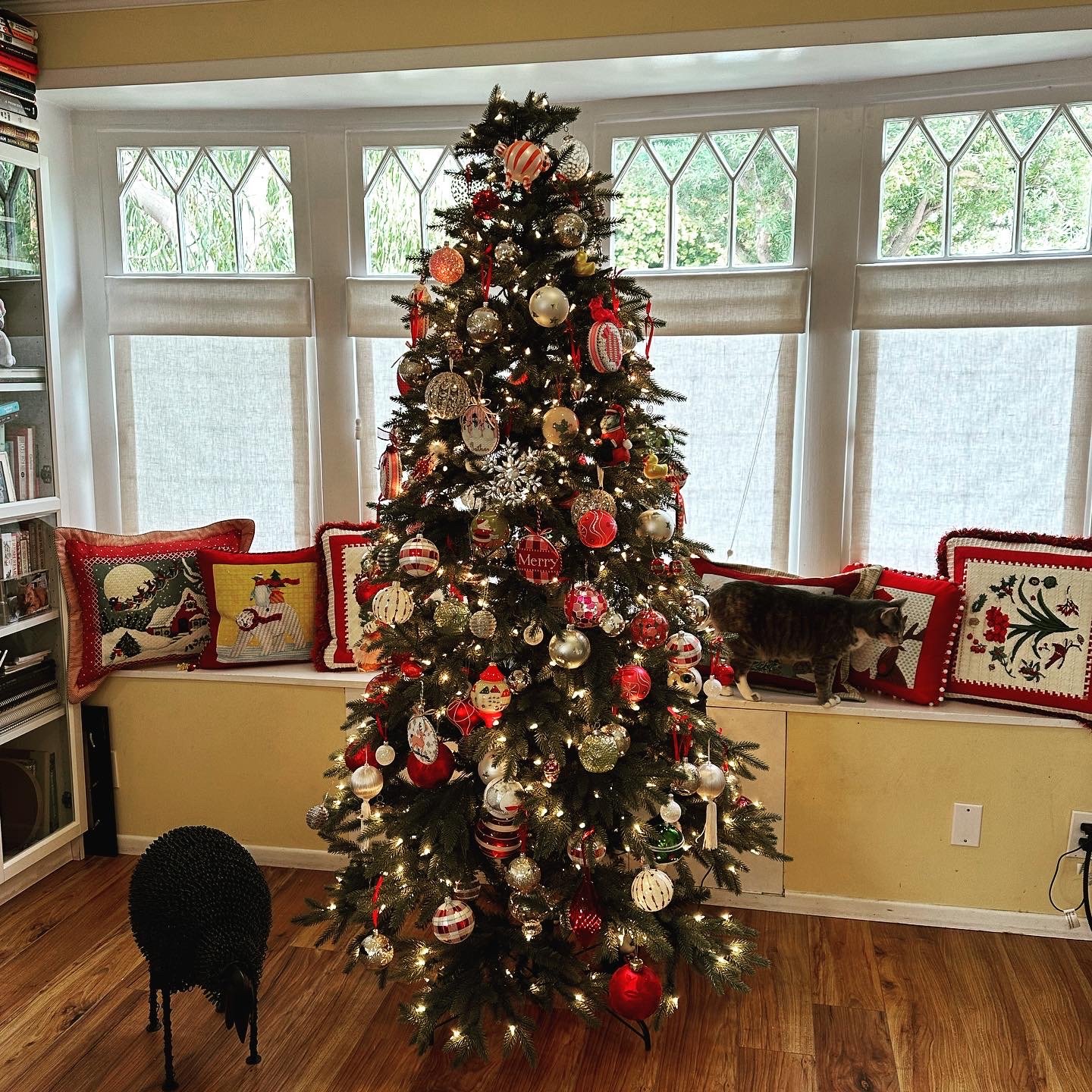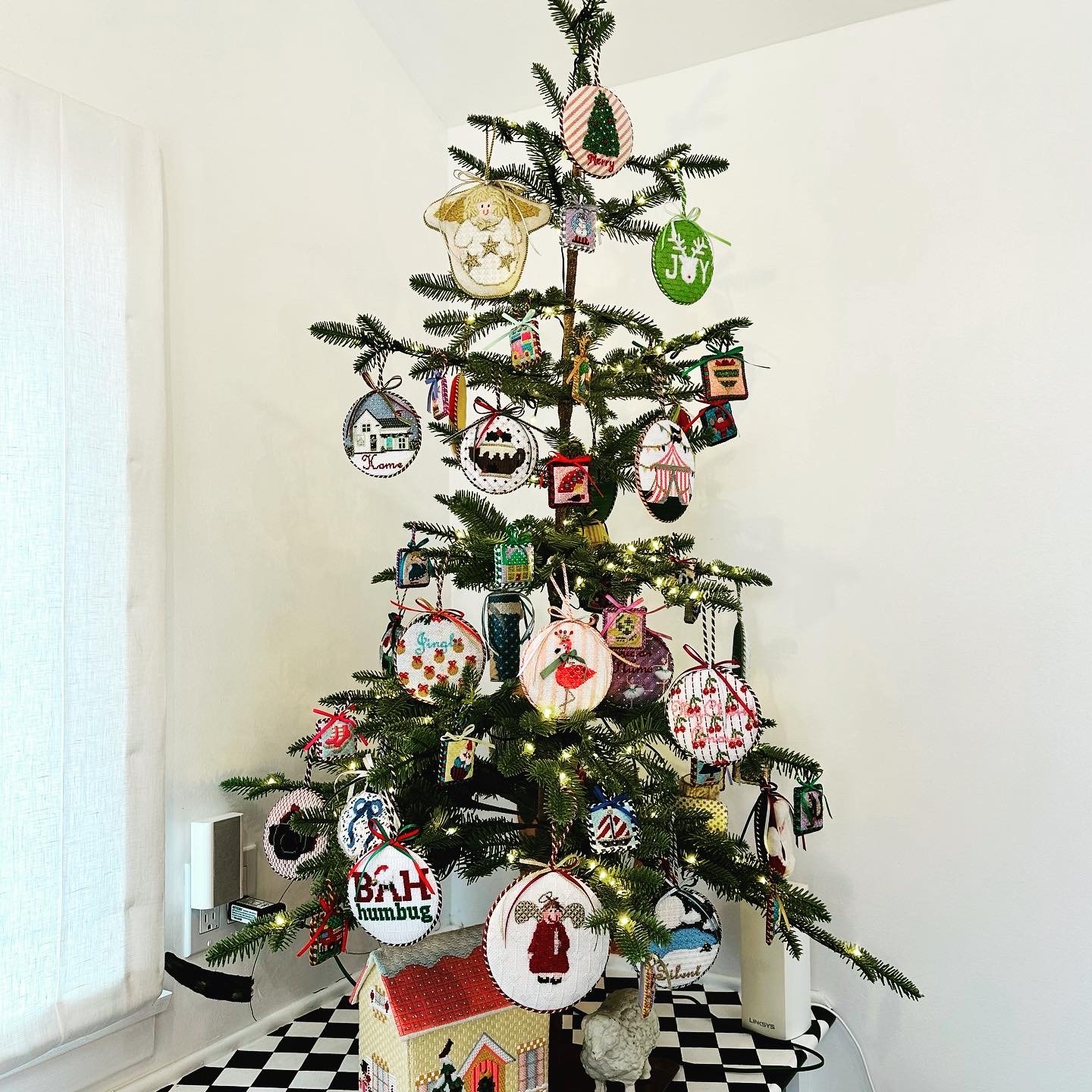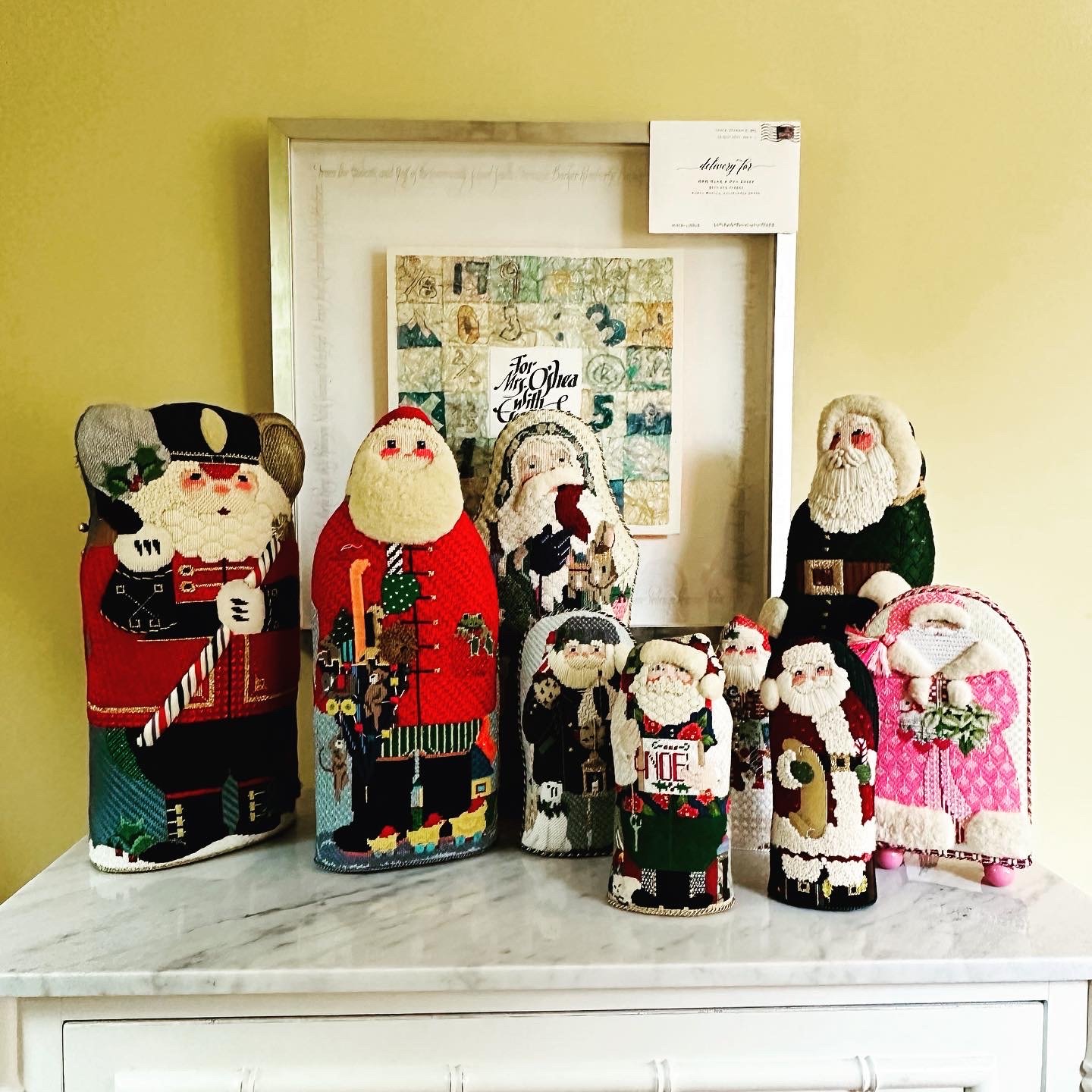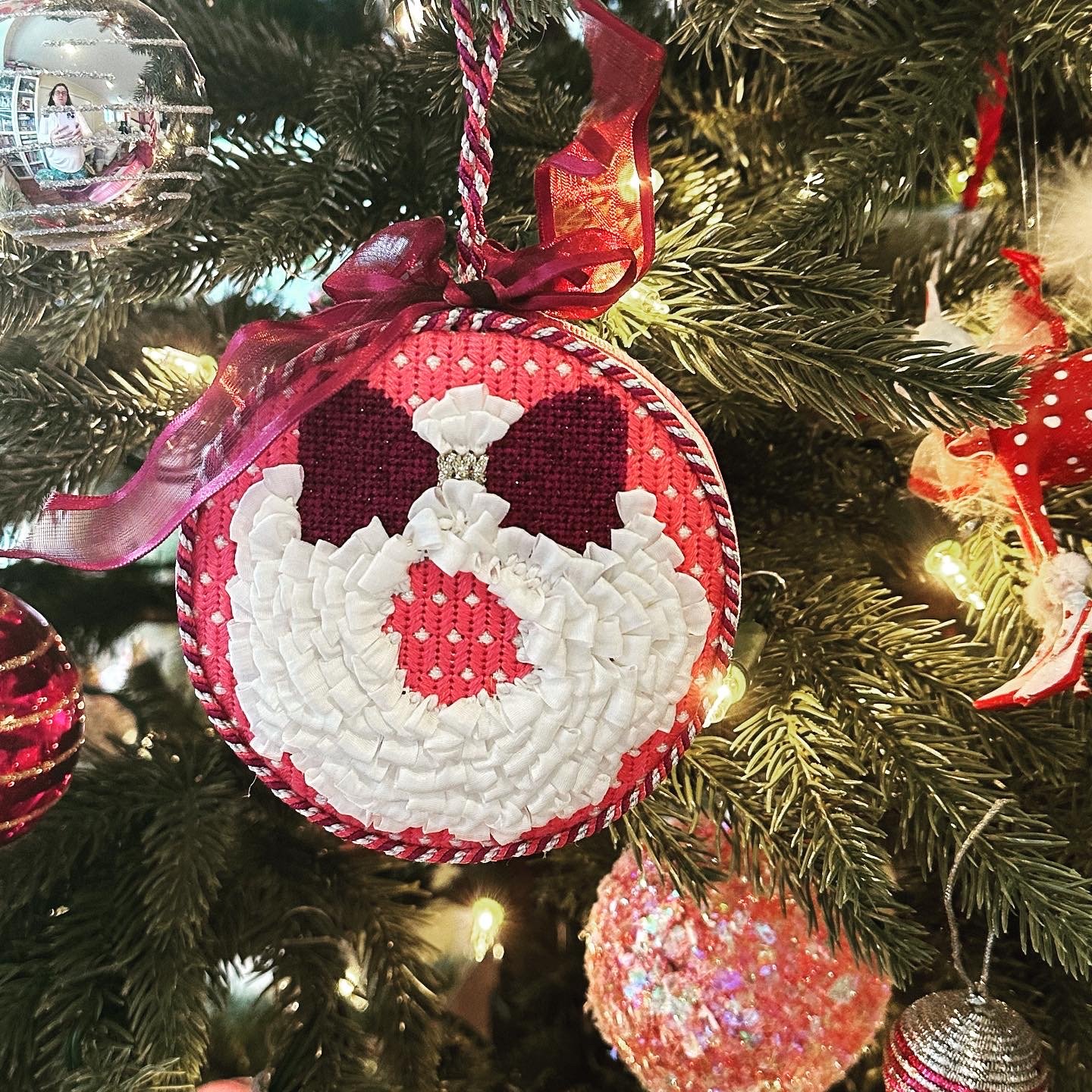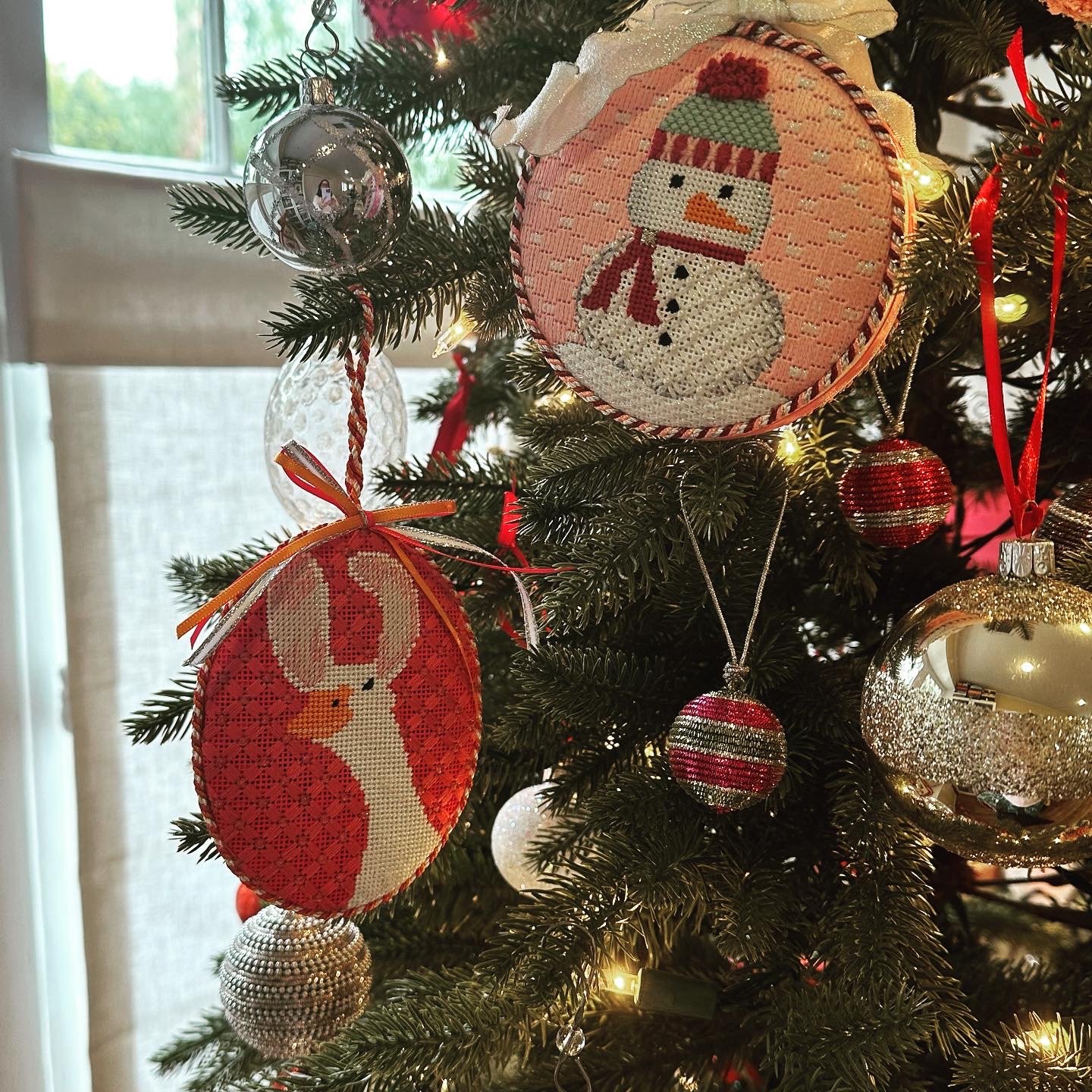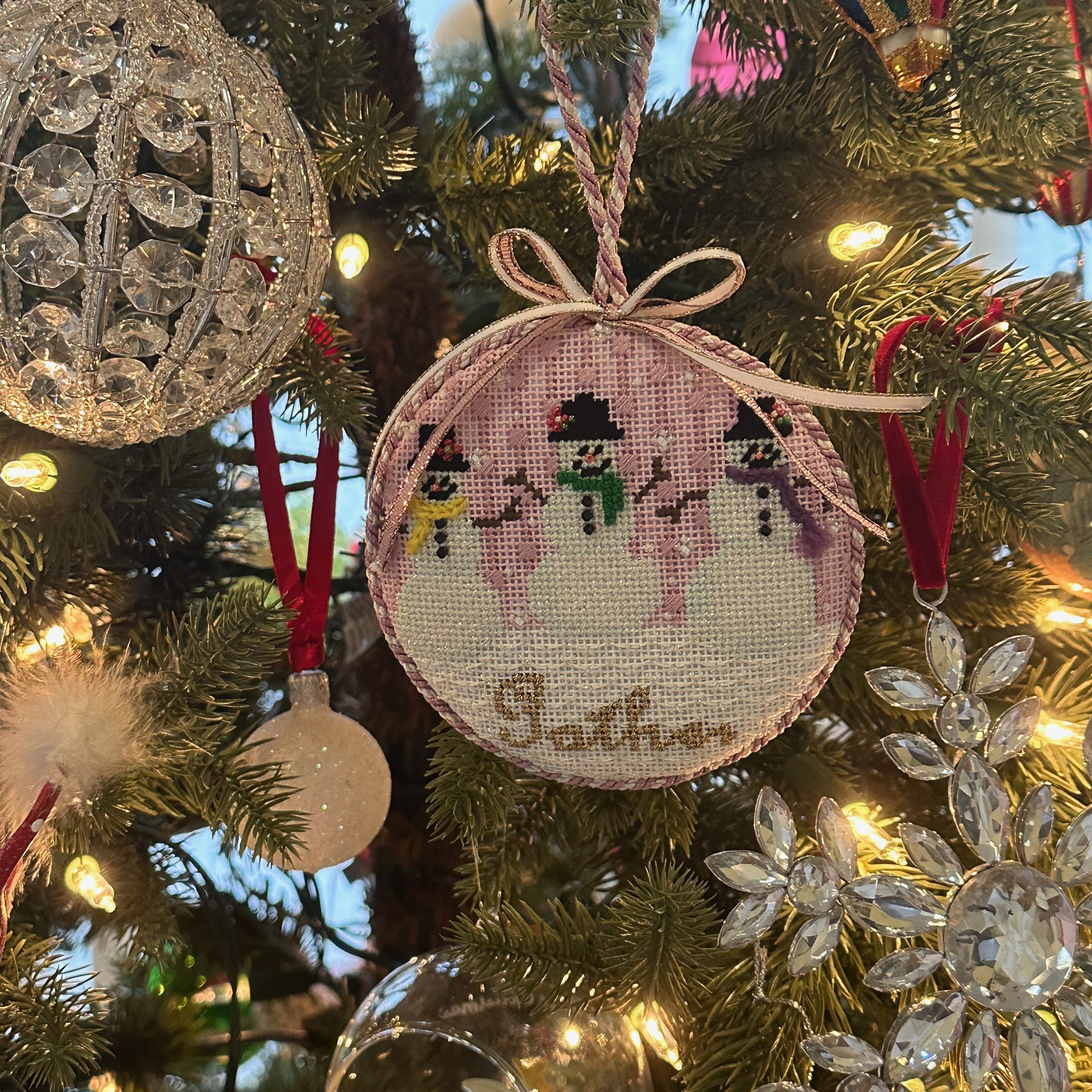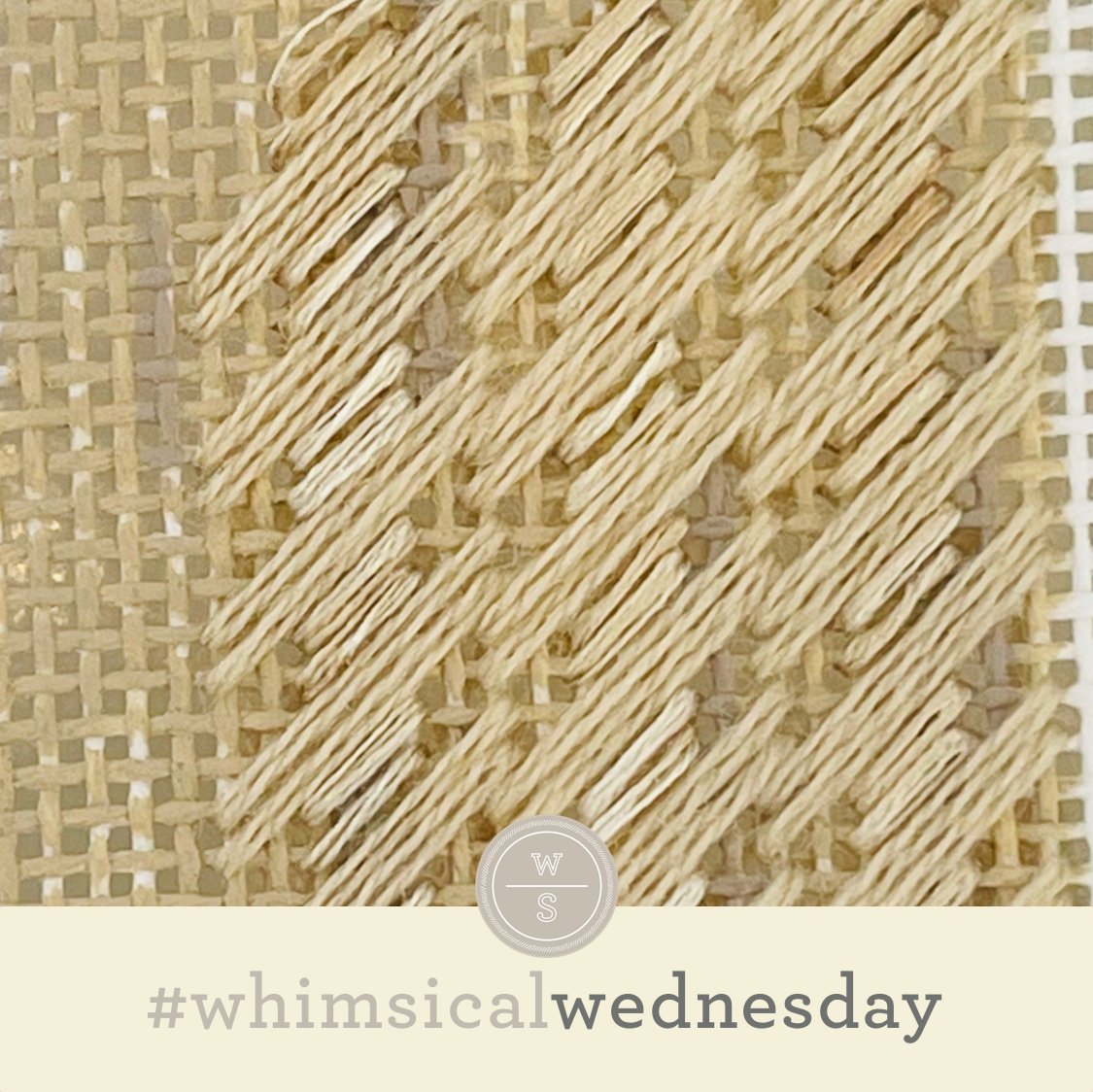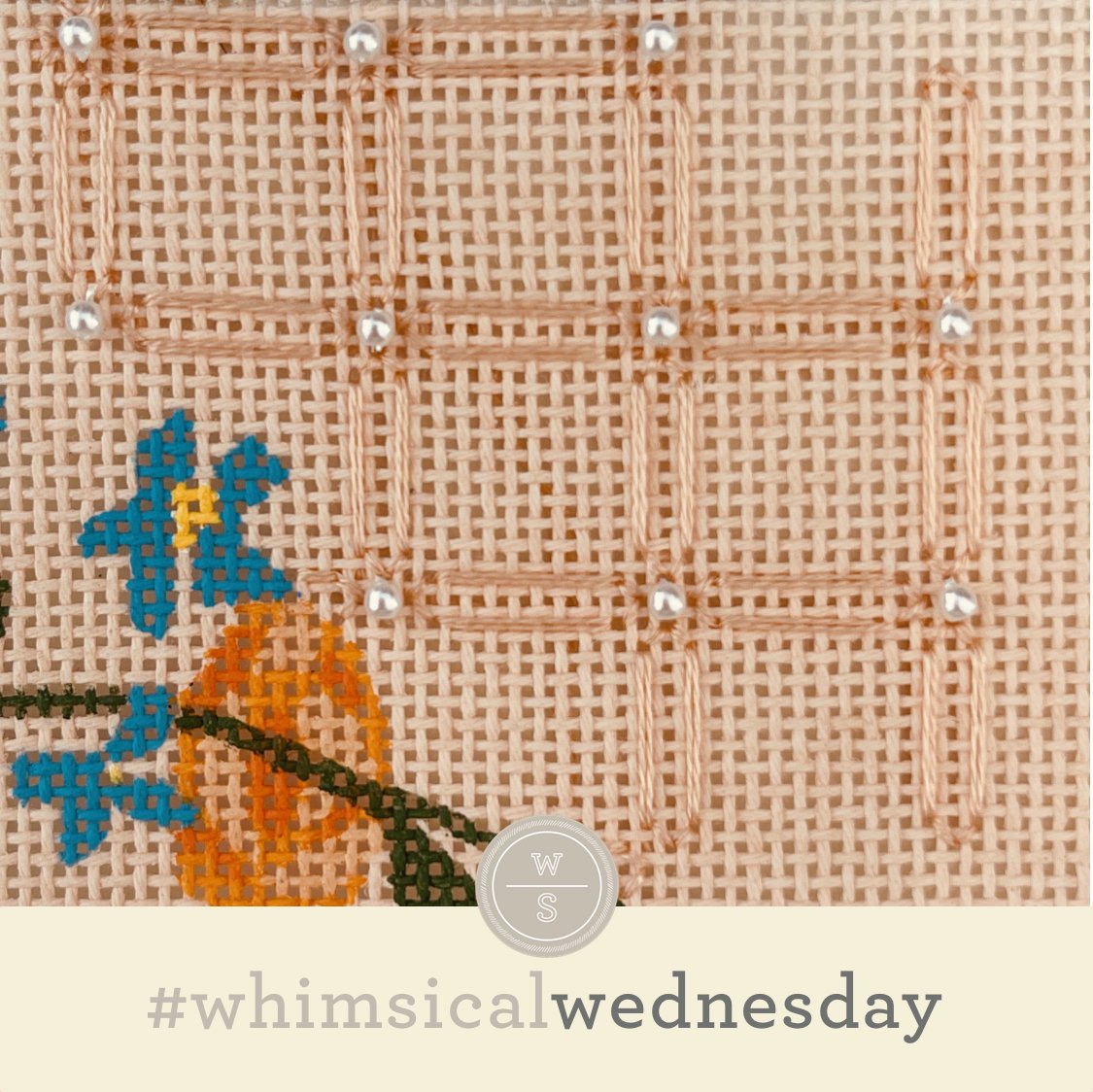Well, my Melissa Shirley Santas are the gifts that keep on giving. Musical Santa is gifting us with today’s stitch.
Technically, this stitch was hiding behind the madness of my Santa collection that debuted earlier this month. Visit Instagram to see a sample of my needlepoint Christmas decorations this year.
The stitched sample is from the drum on the b-side of my musical Santa. (I crack myself up sometimes.) I used somewhere between six and eight plies of Splendor on 13M. (Reminder, this piece is from the 90’s. No judging on ply count.)
This is a vexing stitch yet worth your time. I included the repeated element on its own to help your journey. I strongly recommend stitching a complete element before you move on. It will make your life easier, I promise.
The repeated element is 12 rows wide and 12 rows tall, so it requires a good-sized space to get the pattern going. I’ve used it on a large-ish pumpkin back in the day with silk floss and an added X (four rows wide)over the center of the cross. It’s great for clothing, such as a jacket or sweater with Vineyard Silk, Pepper Pot Silk, or beautiful wool thread.
Just a reminder about how to evaluate stitches for size on your project.
As you are auditioning stitches (from any stitch source), count the number of canvas threads on the diagram that match your mesh size. And there you have what an inch of the stitch will look like. Evaluate that against the area where you plan to use the stitch and make your final decision. If you start integrating this step into your stitch selection process, you may be surprised at how many stitches you think are large are much smaller than you realize. (Or, in today’s case, the stitch is much larger than it looks.)
By (sometimes) including this step in my own process, I find I am now integrating much longer stitches than I ever thought I would. I used to think a stitch six rows long was super big. I have very much changed my tune, which has helped me expand my creativity, especially for large-space stitches.
Today’s stitch diagram, along with all other #whimsicalwednesday and #smallspacesunday stitch diagrams, can also be found on a Pinterest board here. Be sure to follow whimsicalstitch.com on Facebook, Pinterest, Instagram, and Twitter.
If you like what you see on this blog, there's more. Mary’s Whimsical Stitches is a series of three books offering contemporary how-to collections of more than 250 stitches (in each volume) for all stitchers, regardless of skill level. All books include updated and sequenced diagrams from this blog plus a collection of all-new stitches from private lessons and other class projects. Visit here to find a needlepoint retailer that carries my books.
New to needlepoint or looking for a refresher? Please download a handy how-to guide covering basic needlepoint stitches and stitch compensation techniques along with new top-line information on needlepoint materials and tools, how to handle threads, and other helpful needlepoint resources.
whimsicalstitch.com also sells Stitch Guides and Stitch Concepts for Melissa Shirley Designs, Zecca Designs, Sandra Gilmore, Purple Palm, Maggie, and Penny MacLeod, and many more. Click here to see the newest guides and click here to see the entire collection.
I hope you have the perfect spot for this stitch! Please enjoy! Have a wonderful #whimsicalwednesday!
A Note about Diagrams
I use color in diagrams to make them as clear as possible. The primary function of different colored lines is to illustrate a stitch sequence. For example, the layering of colors demonstrates you add them in that order. They can also provide ideas on integrating additional threads (one line for each color). Or, you can use the same thread for all color lines. That's where I encourage you to use your imagination for the space you are stitching!





